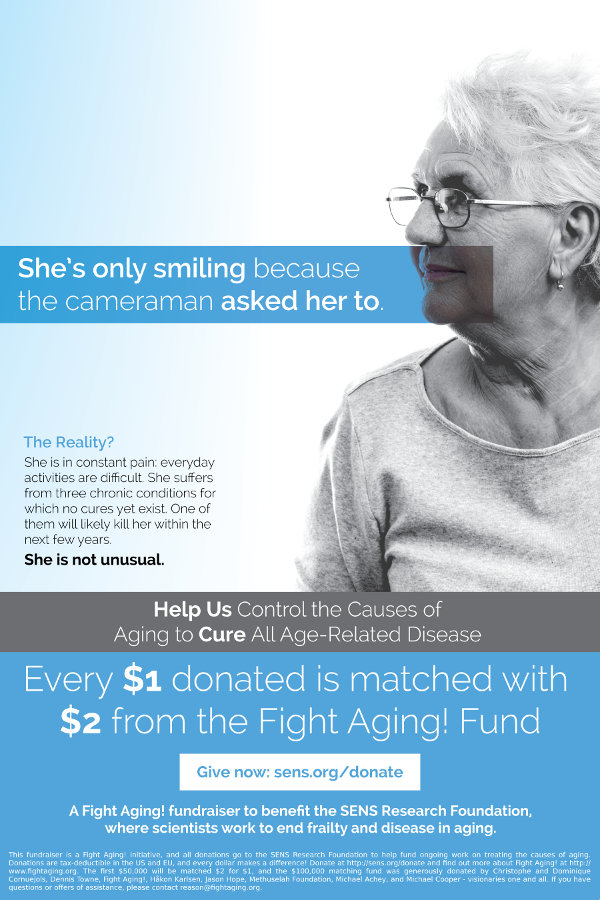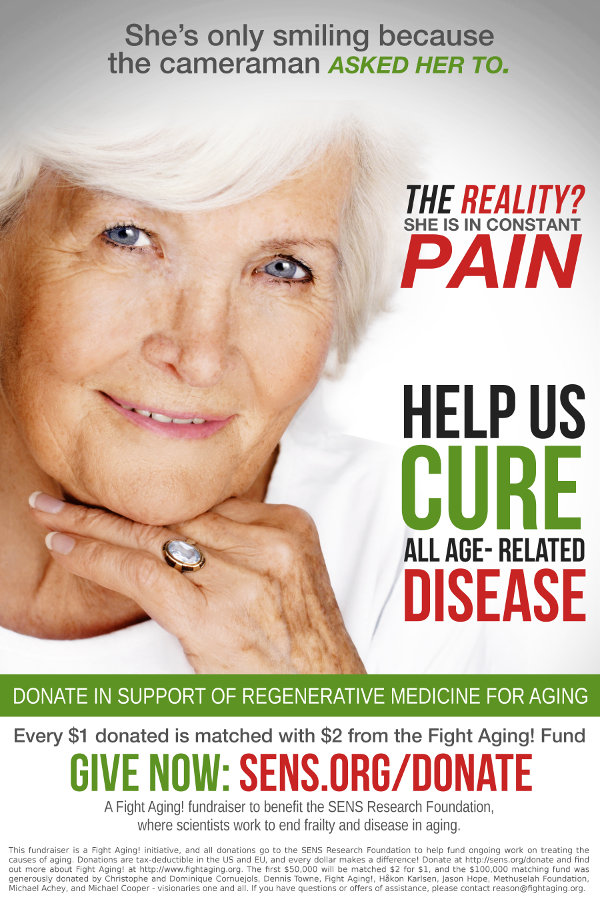Amateur Religious Engineering and Longevity Science
There exists a very long history of people starting explicitly religious movements to achieve secular goals in the mundane world. A very broad range of such ventures can be found even in recent history, in this apostate age of comparatively weak and apolitical mainstream religious institutions. For every group who set out to achieve their ends through political advocacy, such as by starting a single issue political party, you'll find another who choose to start a church. Those who do this outside the established religious mainstream are looked at askance, and often deservedly so, but really you're just as likely to be taken for a ride on either side of the fence. The accumulation of worldly wealth and privilege at the expense of a gullible flock is almost a tradition in certain segments of the modern religious landscape.
For the purposes of this post, I want to glance at a very narrow thread of religious ventures, fictional and otherwise, that winds its way from the science fiction of the golden age and later through satire and art of the 70s and 80s and then into the online transhumanist community of the 90s and its present descendant organizations. At all these points in time, someone thought it a plausible idea that a religious movement should exist for the purpose of preserving and propagating secular technological goals, in particular the extension of healthy life spans through progress in medical science.
As an aside, I should mention that when I'm out there talking to people about longevity science and the need for funding, you can be certain that I'm not bringing any sort of religion to the table. In fact I'd be happier if religious movements started for the purpose of promoting the secular goal of life extension didn't exist, and for many of the same reasons that I'd rather the more vocal "anti-aging" supplement sellers and snake-oil salesmen went away. To the extent that these people succeed in gaining attention for themselves, they make life harder for the rest of us. Nonetheless, these initiatives exist, they are a part of the extended community of supporters, there is a fascinating history bubbling behind it all, and therefore this is worthy of at least a short post to note all of the above.
If you are widely read in science fiction, you will have no doubt encountered numerous tales in which the principals are engaged in what might be called religious engineering: attempting to change the world by means of exploiting the religious impulse as a lever, with varying degrees of cynicism and spiritualism involved. Stranger in a Strange Land and Neverness are two works that spring to mind. It is not an uncommon concept in fiction spanning the last decades of the last century, probably helped along by the fact that a former figure in that space was off doing something of the sort in the real world, with results we're all familiar with by now. That aside, science fiction serves a purpose in the evolution of technology and culture by virtue of being an idea hothouse. What exists today in the sciences and technology was usually chewed over speculatively and in increasingly accurate detail by numerous authors of the past century. Ideas don't stay stuck in their books: they take wing when they are found attractive.
Starting a religious movement for reasons that are openly secular, as opposed to keeping your secular goals hidden behind a veneer of faith, has come and gone as a fashion over recently decades. You might look at Discordianism, the Church of the Subgenius, and even Pastafarianism as examples of openly secular religions. The degree to which people do take these things religiously is a matter for debate, but it is hard to argue against their success as cultural movements in their time. These are the children and the siblings of science fictional religious engineering, ideas for advocacy escaped and made real.
So given this promiscuously inventive history, and not even touching on the ever-changing fringes of mainstream Christianity in countries like the US, we shouldn't be entirely surprised to discover small religious movements and proposals for the same associated with the support of longevity science. Any community of a meaningful size will produce such initiatives, and the modern community supportive of radical life extension achieved through advances in medicine is now several generations old, spanning a time of great invention in religious engineering, both inside and outside the mainstream. One of the first examples of this sort of thing that I recall encountering via the transhumanist community was the Church of Virus, a clear descendant of numerous science fiction concepts. That, perhaps appropriately, is little more than an idea:
Virus was created to compete with the traditional (irrational) religions in the human ideosphere with the idea that it would introduce and propagate memes which would ensure the survival and evolution of our species. The main advantage conferred upon adherents is Virus provides a conceptual framework for leading a truly meaningful life and attaining immortality without resorting to mystical delusions.
There are also populated groups, however, such as the Society for Venturism that has been a co-traveler with the cryonics community for some time now:
For those not familiar with it, Venturism is a 'secular religion' in the sense that the Praxis might be considered one, but very minimalistic and targeted specifically to the needs of the cryonics community. One of the things it does is to help cryonicists optimize their suspensions, by giving them "religious" grounds to object to autopsy (which would greatly harm their chances of repair and reanimation). Another thing it has done is fundraising for cases where last-minute funding was needed for a terminal patient who could not obtain life insurance.
Similarly, and of a more recent origin, there is apparently a Church of Perpetual Life which has the sound of Unitarianism for supporters of radical life extension and cryonics:
Perpetual Life is a science-based church that is open to people of all faiths. We are non-denominational and non-judgmental. We are also a central gathering place for Humanists, atheists, agnostics and Transhumanists. We hope that you also will find this church to be welcoming and inspiring. Our Mission is to assist all people in the radical extension of healthy human life, and to provide fellowship for longevity enthusiasts through regular, holiday and memorial services.
As it becomes increasingly known among the public that new approaches to treating aging and extending healthy life spans are on the way, I can only imagine that we'll see more of this. The sphere of religion as it evolves in practice works much like the intersection of politics and business: in particular there is disruption, revolution of ideas, movement of customers, and change. The large mainstream is always slow-moving and conservative, and as a consequence its leaders will find themselves challenged on the topic of extended healthy life spans, just as they have been challenged on medical advances in the past. They will fight a little, and then smaller and more nimble challengers espousing more sympathetic theologies will gain adherents, and ultimately the mainstream will accommodate them or be replaced: the same brand, but different bishops running the show. I'm sure it will be interesting to watch, for all that it has little relevance to presently important goals and challenges in advocacy for longevity science.

